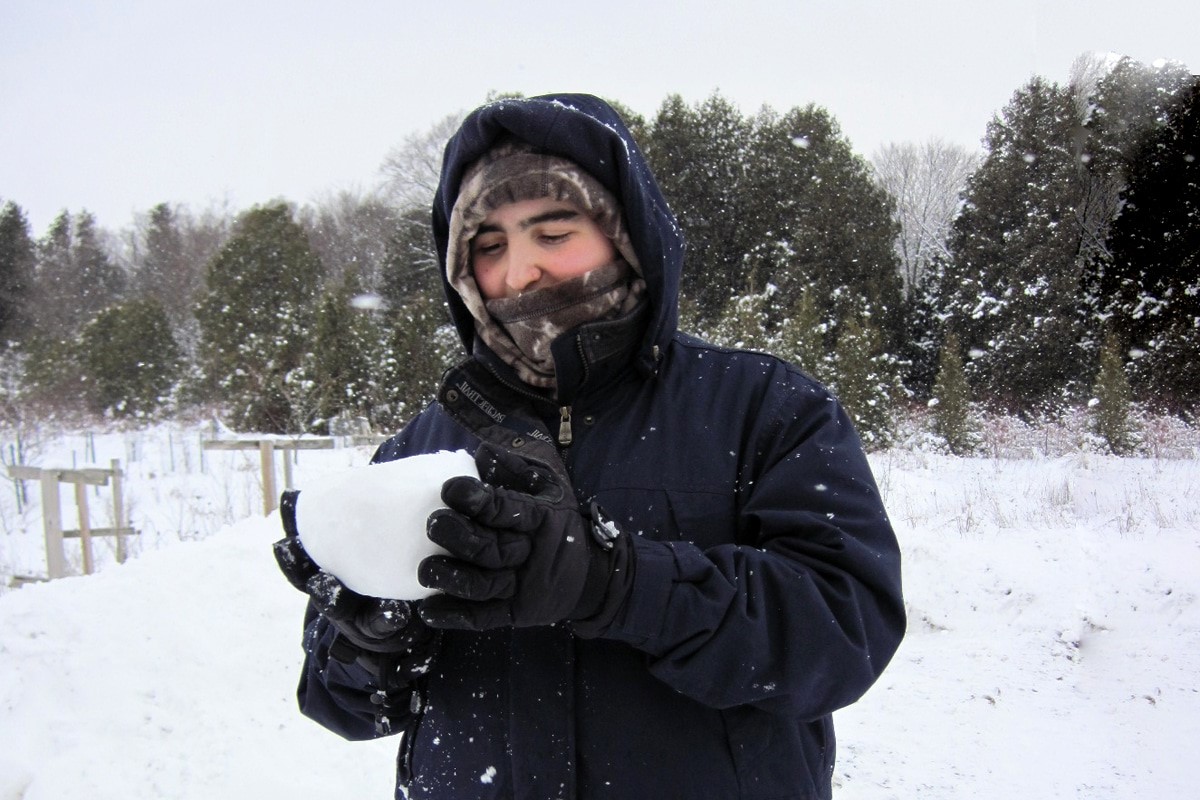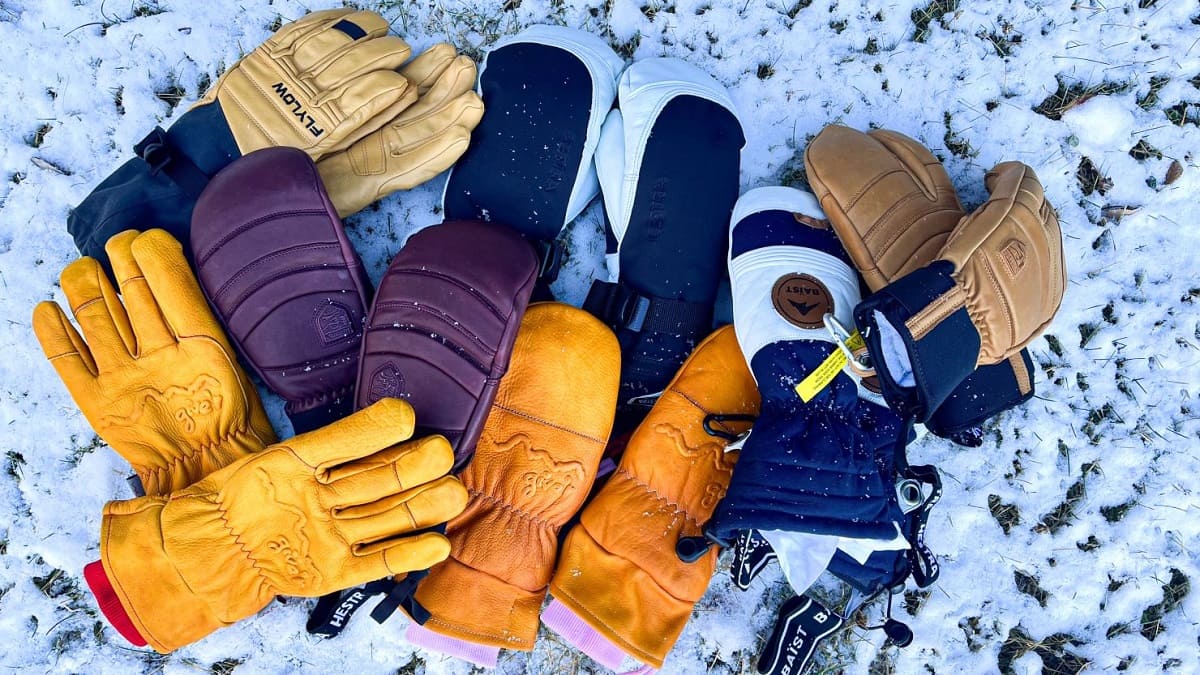Home>Weather and Climate>The Relationship Between Cold Weather And Illness: Separating Fact From Fiction


Weather and Climate
The Relationship Between Cold Weather And Illness: Separating Fact From Fiction
Published: March 5, 2024
Discover the truth about the impact of weather and climate on illness. Learn how cold weather affects your health and separate fact from fiction. Explore the relationship between weather and illness.
(Many of the links in this article redirect to a specific reviewed product. Your purchase of these products through affiliate links helps to generate commission for Temperatures.com, at no extra cost. Learn more)
Table of Contents
Understanding the Impact of Cold Weather on the Immune System
Cold weather has long been associated with an increase in illnesses, leading many to wonder about the relationship between the two. Understanding the impact of cold weather on the immune system is crucial in dispelling misconceptions and taking proactive measures to stay healthy during the colder months.
-
Exposure to Cold Temperatures
- When exposed to cold temperatures, the body's natural response is to conserve heat by constricting blood vessels. This can potentially weaken the immune system's ability to fight off infections, making individuals more susceptible to illnesses.
-
Vitamin D Deficiency
- During the colder months, people tend to spend more time indoors, leading to reduced exposure to sunlight. This decrease in sunlight exposure can result in lower levels of vitamin D, which plays a vital role in supporting the immune system. A deficiency in vitamin D may compromise the body's ability to fend off infections.
-
Dry Air
- Cold weather often brings dry air, which can have a dehydrating effect on the body. When the respiratory system becomes dry, it may be less effective in trapping and eliminating viruses and other pathogens, potentially increasing the risk of respiratory infections.
-
Behavioral Changes
- In colder weather, individuals are more likely to gather indoors, increasing the likelihood of close contact with others. This can facilitate the spread of viruses and bacteria, contributing to a higher incidence of illnesses during the winter months.
-
Stress
- Cold weather can also bring about added stress, whether due to concerns about inclement weather, holiday-related pressures, or seasonal affective disorder. Stress has been shown to weaken the immune system, making individuals more susceptible to infections.
Understanding the impact of cold weather on the immune system underscores the importance of taking proactive steps to support overall health during the colder months. By addressing factors such as vitamin D levels, hydration, and stress management, individuals can bolster their immune systems and reduce the risk of falling ill during the winter season.
Debunking Common Myths About Cold Weather and Illness
As the temperature drops and winter sets in, numerous myths about cold weather and illness abound. It's essential to debunk these misconceptions to gain a clearer understanding of how cold weather truly impacts our health.
Myth 1: Cold Weather Itself Causes Illness
One of the most prevalent myths is the belief that cold weather directly causes illnesses such as the common cold or the flu. In reality, viruses, not the temperature, are the primary culprits behind these illnesses. While cold weather may weaken the immune system, making individuals more susceptible to infections, it does not directly cause illness.
Myth 2: Going Outside with Wet Hair Leads to Illness
Many have been warned about the dangers of going outside with wet hair, with the belief that it can lead to catching a cold or flu. However, this is simply a myth. Colds and flu are caused by viruses, not by being exposed to cold air with wet hair. While being exposed to cold temperatures may make an individual uncomfortable, it does not directly result in illness.
Myth 3: Staying Indoors Protects Against Illness
There is a common misconception that staying indoors during cold weather can shield individuals from getting sick. However, indoor environments can also harbor viruses and bacteria, especially when people are in close proximity to one another. Additionally, dry indoor air can contribute to respiratory issues, potentially increasing the risk of illness.
Myth 4: Antibiotics Can Cure Colds and the Flu
It's a widespread misconception that antibiotics are effective in treating colds and the flu. In reality, these illnesses are caused by viruses, and antibiotics are only effective against bacterial infections. Overuse of antibiotics can lead to antibiotic resistance and disrupt the body's natural balance of bacteria, without providing any benefit in treating viral infections.
Myth 5: Cold Weather Kills Germs
Some believe that cold weather has the ability to kill germs and reduce the risk of illness. While certain viruses may survive for shorter periods in cold, dry air, the overall impact of cold weather on reducing the spread of viruses is minimal. Proper hand hygiene, vaccination, and other preventive measures are far more effective in reducing the risk of illness.
By debunking these common myths about cold weather and illness, individuals can gain a more accurate understanding of how viruses spread and the factors that contribute to seasonal illnesses. This knowledge empowers individuals to take proactive steps to protect their health during the colder months, focusing on evidence-based preventive measures rather than misconceptions.
Exploring the Role of Cold Weather in the Spread of Viruses
Cold weather plays a significant role in the spread of viruses, particularly during the winter months when respiratory illnesses are more prevalent. Understanding the dynamics of how cold weather influences the transmission of viruses is crucial in implementing effective preventive measures and mitigating the risk of illness.
1. Indoor Crowding and Close Contact
During colder weather, people tend to spend more time indoors, often in close proximity to others. This indoor crowding creates an environment conducive to the spread of viruses, as close contact increases the likelihood of transmission. Additionally, indoor spaces with poor ventilation can allow viruses to linger in the air, further facilitating their spread from person to person.
Read more: Mexico’s Winter Chill Facts
2. Dry Air and Respiratory Health
Cold weather often brings dry air, which can have a drying effect on the respiratory system. When the air is dry, the mucous membranes in the nose and throat may become less effective in trapping and eliminating viruses and other pathogens. As a result, individuals may be more susceptible to respiratory infections during the colder months.
3. Immune System Response
Exposure to cold temperatures can impact the body's immune response. When the body is exposed to cold, blood vessels constrict to conserve heat, potentially weakening the immune system's ability to combat infections. This can make individuals more susceptible to viruses, including those that cause the common cold and flu.
4. Seasonal Behavioral Patterns
Cold weather often brings about changes in behavioral patterns, such as increased time spent indoors, reduced physical activity, and altered dietary habits. These changes can impact overall health and immune function, potentially making individuals more vulnerable to viral infections.
5. Viral Stability in Cold Environments
Some viruses have been found to survive for longer periods in cold, dry conditions. While cold weather alone may not directly kill viruses, it can contribute to their stability on surfaces and in the environment, increasing the risk of transmission when individuals come into contact with contaminated surfaces or respiratory droplets.
By exploring the role of cold weather in the spread of viruses, it becomes evident that multiple factors contribute to the increased transmission of viral illnesses during colder months. Addressing these factors through preventive measures such as proper ventilation, maintaining indoor humidity levels, promoting good hygiene practices, and supporting immune health can help mitigate the impact of cold weather on the spread of viruses and reduce the incidence of seasonal illnesses.
Read more: Saturn’s Temperature: Facts And Information
Tips for Staying Healthy During the Cold Weather Months
As the colder months set in, it becomes increasingly important to prioritize health and well-being to ward off seasonal illnesses. Implementing proactive measures can significantly reduce the risk of falling ill and support overall well-being during the winter season.
1. Maintain Adequate Hydration
Staying well-hydrated is crucial, especially in dry, cold weather. Adequate hydration supports the body's natural defense mechanisms and helps maintain optimal respiratory function. Drinking plenty of water and consuming hydrating foods such as soups, herbal teas, and fruits can contribute to overall hydration levels.
2. Support Immune Health with Nutrition
Consuming a balanced diet rich in immune-supporting nutrients is essential for bolstering the body's defenses. Incorporating foods high in vitamin C, vitamin D, zinc, and antioxidants can help fortify the immune system, potentially reducing the risk of infections during the colder months.
3. Practice Good Hand Hygiene
Frequent handwashing is a simple yet effective measure for preventing the spread of viruses. Proper hand hygiene, including thorough handwashing with soap and water for at least 20 seconds, can significantly reduce the likelihood of contracting and spreading illnesses.
4. Ensure Sufficient Vitamin D Intake
Given the reduced sunlight exposure during the winter, it's important to consider vitamin D supplementation, especially for individuals with limited sun exposure. Vitamin D plays a crucial role in immune function, and maintaining adequate levels can support overall health during the colder months.
5. Stay Active and Engage in Physical Exercise
Regular physical activity can help maintain overall health and support immune function. Engaging in indoor exercises, yoga, or brisk walks, even during colder weather, can contribute to physical well-being and help alleviate stress, which is known to impact immune health.
6. Prioritize Rest and Stress Management
Adequate rest and stress management are vital components of maintaining a healthy immune system. Getting sufficient sleep and implementing stress-reduction techniques such as meditation, deep breathing exercises, or mindfulness practices can support overall well-being and immune function.
7. Ensure Proper Indoor Ventilation
Proper ventilation in indoor spaces is essential for reducing the concentration of airborne viruses. Opening windows periodically to allow fresh air circulation can help minimize the buildup of respiratory droplets and pathogens, contributing to a healthier indoor environment.
8. Consider Flu Vaccination
Receiving an annual flu vaccination is a proactive measure to reduce the risk of contracting seasonal influenza. Vaccination not only protects individuals from the flu but also contributes to community immunity, reducing the overall spread of the virus.
9. Monitor Indoor Humidity Levels
Maintaining optimal indoor humidity levels (around 40-60%) can help support respiratory health and reduce the survival of airborne viruses. Using a humidifier to add moisture to indoor air can alleviate dryness and potentially lower the risk of respiratory infections.
10. Seek Medical Advice When Necessary
If experiencing symptoms of illness, it's important to seek medical advice promptly. Early intervention and appropriate medical care can help mitigate the severity of illnesses and prevent potential complications.
By implementing these proactive measures, individuals can take charge of their health during the cold weather months, reducing the risk of seasonal illnesses and promoting overall well-being. Prioritizing hydration, nutrition, hygiene, and immune support can contribute to a healthier and more resilient winter season.










